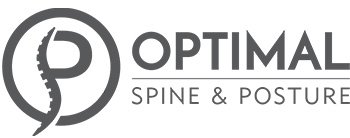Is Chiropractic The Right Treatment After a Car Crash?
Being involved in a motor vehicle collision (MVC) can be a stressful event for all of the individuals involved. Not only can the actual trauma and initial losses be stressful, but the recovery process often can be put aside and not made the number one priority. The time involved with doctor visits and healthcare treatments, the pain and suffering, loss of income from missed work, medical expenses and possible permanent injuries or disabilities can be the multiple factors that weigh on a patient.
What Treatment Do I need after a Car Crash?
With all the different treatment options available: Chiropractors, Physical Therapist, Massage Therapist, Pain Management Centers, Orthopedic Specialist, etc., who is the best provider to go to after being in a car crash?
While all of these providers have great value and are appropriate at times, chiropractors play a role in the healing process that no other provider can. To understand a chiropractor’s specific role in the healing process one needs to understand what happens to tissues after injuries and what needs to be done to heal these tissues.
Motion is Lotion
After a traumatic injury has occurred to the spine, the spine guards and muscles spasm because of the injury. If this muscle splinting is prolonged, fixations and scar tissue are laid down between spinal segments. These fixations further decrease the overall range of motion (ROM) in the spinal joints and increases stress on damaged spinal joints that are trying to heal. By reducing the scar tissue adhesions with spinal adjustments, this restores normal spine biomechanics and relieves the tension at injured segments, thereby, providing an environment more conducive to healing.
A study was published in the journal Spine that illustrates one of the reasons spinal adjustments are needed. In this study researchers produced mechanical fixations in the spines of dogs. They found that when they fixated one segment, the segments above and below began to demonstrate disc degeneration and spondylosis (arthritic changes), and these irreversible changes occurred in only two months! (1)
This exact same thing happens to human spines that do not have normal motion in spinal segments. Chiropractors and osteopaths are the only health care providers in this county licensed and trained to perform spinal manipulations and adjustments, with many osteopaths not practicing manipulations as osteopathic training in adjusting the spine is usually quite brief in comparison. In fact, chiropractors provide over 94% of the spine manipulations delivered in this country. (2)
Another article published in the journal Clinical Biomechanics states that immobilization not only causes arthritis but it delays the healing process.
“It (evidence) shows beyond a reasonable doubt that immobilization is not only a cause of osteoarthritis but that it delays healing.”
“If immobilization, irrespective of its cause, cannot be avoided, it would be therapeutically logical to take every possible step to limit its extent and duration.”
“Scar tissue begins to be deposited immediately upon immobilization and serve to further decrease mobility. Within two weeks eburnation (bone depositing) in bone is detectable and radiographic evidence of joint space narrowing, osteophyte formation (bone spurring), and subchondral sclerosis is apparent.” (2)
Importance Of Being Compliant With Your Care
Frequency of treatment is another topic that is often coming up. Patients do not always realize the necessity of why they need to stick to a strict treatment schedule at the beginning of treatment and many attorneys, other healthcare professionals and insurance adjusters additionally may not understand why the frequency of treatment is required and also why the length of treatment may be necessary.
I have had countless attorneys tell patients that too much chiropractic care will hurt their case and I regularly receive letters from insurance adjusters stating that the patient just received a soft tissue injury they and they should completely heal in about 6 weeks. There is zero research to support such statements and claims and the research literature on clinical treatment guidelines actually state the opposite.
A paper published in the Journal of Manipulative Therapy (JMPT) Structural rehabilitation of the spine and posture: Rationale for treatment beyond the resolution of symptoms answers this.
“Chiropractic is primarily aimed at restoring proper spinal mechanics, which will, in turn, influence the function of the nervous system.”
“Because correct spinal mechanics and the health of the whole neuromusculoskeletal system are interdependent, chiropractic management involves the analysis of all sites of spinal joint dysfunction. Consequently, chiropractic rehabilitation is driven by the restoration and rehabilitation of normal structure and function and not merely the relief of symptoms and/or pain.”
“Also, the regimen of care must proceed for a sufficient length of time so as to address the chronicity of the remodeling stage of the healing process (i.e. 3wk-12months or more).”
“To concentrate on pain or other symptoms as the primary method to assess efficacy of treatment is not only evidence of a superficial understanding of chiropractic principles, but is also evidence of a superficial understanding of the workings of the biological organism.” (3)
Now I’m clearly not saying that chiropractic care is the only care needed to help individuals recover from injuries related to a whiplash trauma or a motor vehicle collision but chiropractic certainly does play a vital role in a patients recovery from soft tissue injuries. A chiropractor trained in traumatology and biomechanics should certainly be consulted and be part of a patient’s healthcare team!
If you have been in a car crash recently and would like a FREE consultation call 208-748-5909 or click here for a FREE CONSULTATION with our Boise, Idaho chiropractor.
(1) Kahanovitz N, Arnoczky SP, Levine DB, Otis JP: The effects of internal fixation on the articular cartilage of unfused canine facet joint cartilage. Spine 9(3):268-272, 1984
(2) Videman, T. Experimental models of osteoarthritis: the role of immobilization. Clinical Biomechanics 1987; 2 (also reviewed in Chiropractic Report)
(3) Videman, T. Experimental models of osteoarthritis: the role of immobilization. Clinical Biomechanics 1987; 2 (also reviewed in Chiropractic Report)




